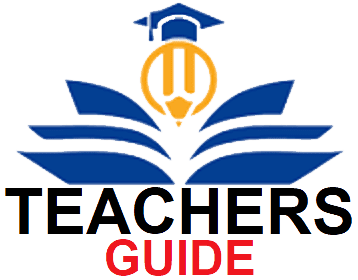The Importance of Monthly Meetings in Schools, Monthly meetings in schools play a crucial role in ensuring smooth operations, fostering collaboration, and enhancing the overall learning environment. These meetings bring together teachers, administrators, and sometimes parents and students to discuss progress, challenges, and strategies for improvement. By holding regular meetings, schools can maintain transparency, address issues promptly, and align everyone toward common goals.
Regular interactions help in building a cohesive team where educators and staff can share ideas, provide feedback, and work collectively for the betterment of the institution. Monthly meetings also serve as a platform for professional development, where teachers can learn about new teaching methodologies, curriculum updates, and student performance trends.
Additionally, these meetings help in maintaining discipline, setting expectations, and ensuring accountability among staff members. They also provide an opportunity to celebrate achievements, recognize outstanding performance, and motivate the school community.
In summary, monthly meetings are essential for effective communication, problem-solving, decision-making, and fostering a positive school culture. They ensure that all stakeholders are on the same page, working together to create an optimal learning environment for students.
1. Enhancing Communication and Collaboration
Effective communication is the backbone of any successful institution, and schools are no exception. Monthly meetings provide a structured platform where teachers, administrators, and support staff can exchange ideas, discuss challenges, and collaborate on solutions. Open dialogue helps in breaking down silos and ensuring that everyone is aligned with the school’s vision and mission.
Collaboration among educators leads to better lesson planning, resource sharing, and innovative teaching strategies. When teachers meet regularly, they can discuss student progress, identify learning gaps, and develop intervention plans. This teamwork enhances the overall quality of education and ensures consistency in teaching standards.
Moreover, monthly meetings encourage transparency between school leaders and staff. Administrators can share updates on policies, upcoming events, and institutional changes, while teachers can voice their concerns and suggestions. This two-way communication fosters trust and strengthens professional relationships.
By promoting a culture of open communication, monthly meetings help in resolving conflicts, improving coordination, and creating a supportive work environment. When all stakeholders are well-informed and engaged, the school functions more efficiently, ultimately benefiting students.

2. Monitoring Academic Progress and Performance
One of the key benefits of monthly meetings is the ability to track and evaluate academic progress. Teachers can present reports on student performance, highlighting areas of improvement and success. These discussions help in identifying struggling students early, allowing for timely interventions such as remedial classes or personalized learning plans.
School leaders can analyze examination trends, compare results across classes, and assess the effectiveness of teaching methods. By reviewing data collectively, educators can make informed decisions to enhance curriculum delivery and student outcomes.
Additionally, monthly meetings provide an opportunity to discuss standardized test results, project-based assessments, and extracurricular achievements. This holistic evaluation ensures that students receive a well-rounded education, focusing not only on academics but also on co-curricular development.
Regular academic reviews also help in setting short-term and long-term goals for both students and teachers. By monitoring progress consistently, schools can maintain high educational standards and adapt to changing learning needs.
In essence, monthly meetings serve as a checkpoint to ensure that academic objectives are being met, teaching strategies are effective, and students are on the right path to success.
3. Professional Development for Teachers
Monthly meetings are an excellent avenue for teacher training and professional growth. Schools can invite experts to conduct workshops on new teaching techniques, classroom management, and educational technology. Continuous learning helps teachers stay updated with the latest trends in education, improving their instructional skills.
These meetings also allow educators to share best practices, discuss challenges, and seek advice from colleagues. Peer learning fosters innovation and creativity in teaching, leading to more engaging and effective classroom experiences.
Furthermore, administrators can use these sessions to provide constructive feedback, recognize outstanding performance, and guide teachers in their career development. Mentorship programs and skill-building activities can be introduced to support new and experienced teachers alike.
Investing in professional development through monthly meetings enhances teacher motivation, job satisfaction, and retention rates. When educators feel supported and empowered, they deliver better results, positively impacting student achievement.
Overall, these meetings contribute to a culture of lifelong learning, ensuring that teachers remain competent, confident, and passionate about their profession.

4. Strengthening Discipline and School Policies
Discipline is a critical aspect of a well-functioning school. Monthly meetings provide a platform to review and reinforce school policies, behavioral expectations, and disciplinary measures. Teachers and administrators can discuss recurring issues such as absenteeism, bullying, or classroom disruptions and develop strategies to address them.
By collectively analyzing discipline reports, schools can identify patterns and implement corrective actions. Consistent enforcement of rules ensures a safe and respectful learning environment for all students.
Additionally, these meetings allow for the revision of outdated policies and the introduction of new guidelines based on current needs. Involving teachers in policy-making increases their commitment to upholding school standards.
Clear communication of expectations during monthly meetings helps in maintaining order and accountability. When students, teachers, and parents understand the rules, behavioral incidents decrease, leading to a more productive academic atmosphere.
In summary, regular discussions on discipline ensure a structured and harmonious school environment, fostering better student behavior and academic focus.
5. Parent and Community Engagement
Monthly meetings can also include parent-teacher interactions, strengthening the home-school partnership. Engaging parents in school activities improves student performance, as they become more involved in their child’s education.
These meetings provide updates on school events, academic progress, and ways parents can support learning at home. Open forums allow parents to share concerns, ask questions, and collaborate with teachers for their child’s success.
Community stakeholders, such as local leaders and education boards, can also be invited to discuss school development projects, funding, and outreach programs. Strong community ties enhance resources and opportunities for students.
By fostering parent and community engagement, schools create a supportive network that benefits students holistically, leading to higher motivation and better educational outcomes.
Conclusion
Monthly meetings are vital for effective school management, teacher development, student success, and stakeholder collaboration. They promote communication, accountability, and continuous improvement, ensuring a thriving educational environment. By prioritizing these meetings, schools can achieve excellence in academics, discipline, and overall institutional growth.


I love your blog.. very nice colors & theme. Did youu design this website yourself or diid you hire someone to do it for you?
Plz reply as I’mlooking to desikgn my own blog and would
like to find out where u got thos from. many thanks https://u7bm8.mssg.me/